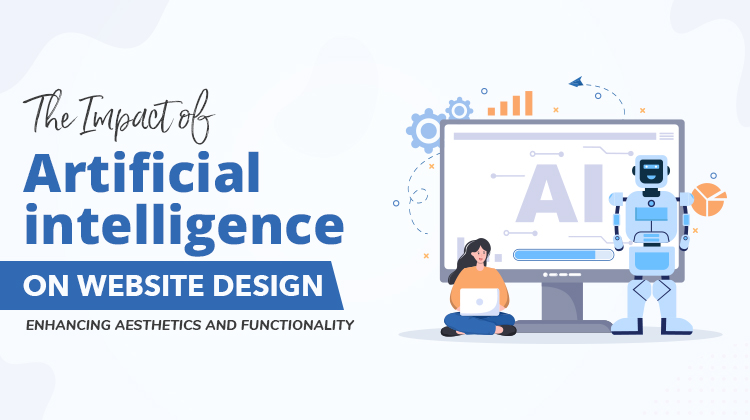In today’s digital era, the influence of artificial intelligence (AI) is widespread across various industries. One field that has significantly benefited from AI advancements is website design.
Websites play a crucial role in shaping user experiences and establishing a brand’s online presence. With AI, designers can now enhance both the aesthetics and functionality of websites, creating engaging and user-friendly digital platforms.
AI in Website Design:
To comprehend the true potential of AI in website design, it is essential to grasp its definition and scope in this context. AI in website design refers to the application of intelligent algorithms and technologies to optimize and automate various design elements. It encompasses a range of AI-powered tools and techniques that empower designers to create visually appealing and highly functional websites. Over the years, AI in website design has evolved, offering new possibilities and opportunities for designers to harness its power.
Enhancing Aesthetics with AI:
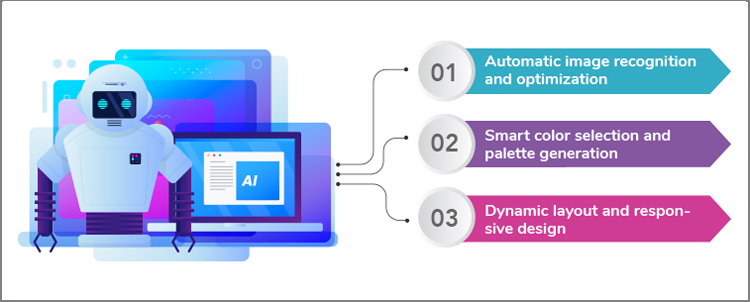
AI plays a transformative role in elevating the visual appeal of websites. By leveraging AI-powered techniques and tools, designers can create visually stunning websites that captivate users from the first glance. Here are some ways AI enhances aesthetics in website design
Automatic image recognition and optimization:
AI algorithms analyze and optimize images, ensuring they are visually appealing while maintaining optimal loading times. This technology enables designers to deliver high-quality visuals without compromising on website performance.
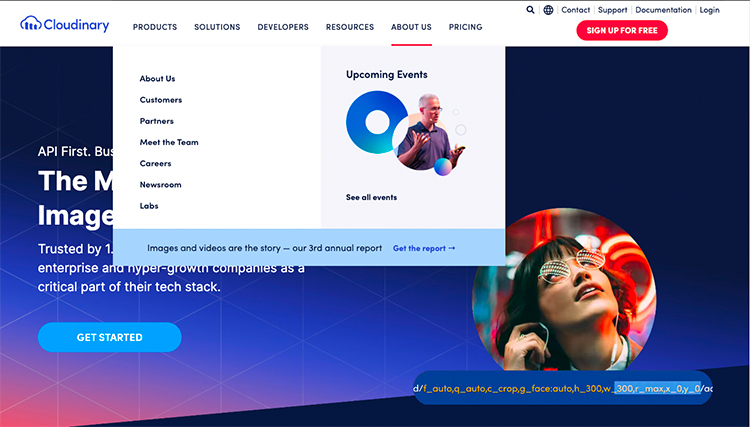
One tool that excels in this area is Cloudinary, an AI-powered media management platform. It offers automatic image recognition, compression, and optimization features, allowing designers to deliver high-quality visuals that load quickly on websites.
Smart color selection and palette generation:
AI tools assist designers in choosing color schemes that complement each other and resonate with the brand’s identity. By analyzing various factors such as brand guidelines and user preferences, AI generates harmonious color palettes that enhance the overall visual appeal of the website.
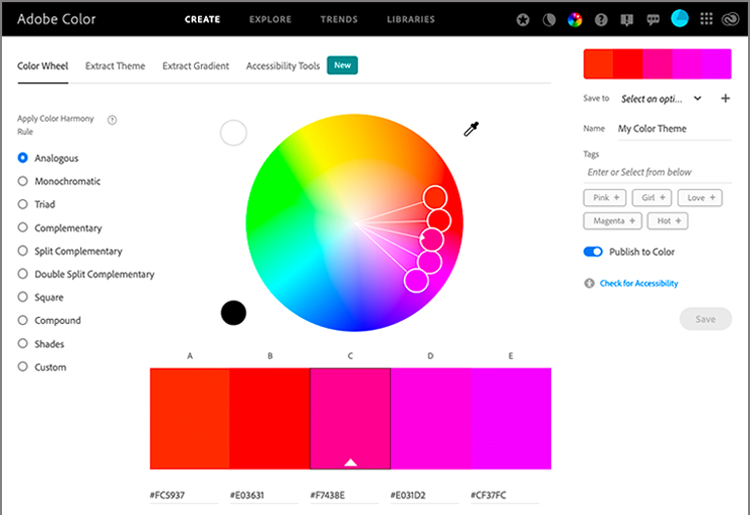
AI tools like Adobe Color CC, formerly Adobe Kuler, assist designers in selecting harmonious color palettes. It uses AI algorithms to generate color combinations based on user preferences and trends, helping designers create visually captivating websites that align with the brand’s identity.
Dynamic layout and responsive design:
AI helps in creating responsive layouts that adapt seamlessly to different devices and screen sizes, enhancing the overall user experience. By leveraging AI, designers can ensure that websites look visually appealing and remain functional across various platforms.
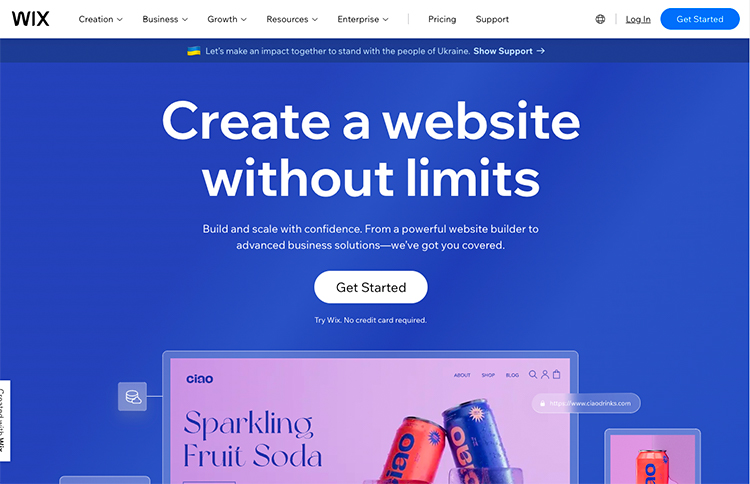
AI-powered design platforms like Wix ADI, or Wix Artificial Design Intelligence, automate the process of creating responsive layouts. These platforms analyze content and user preferences to generate dynamic and responsive website designs that adapt seamlessly to different devices and screen sizes. This ensures that websites look visually appealing and provide an optimal user experience across various platforms.
Personalization and User Experience:
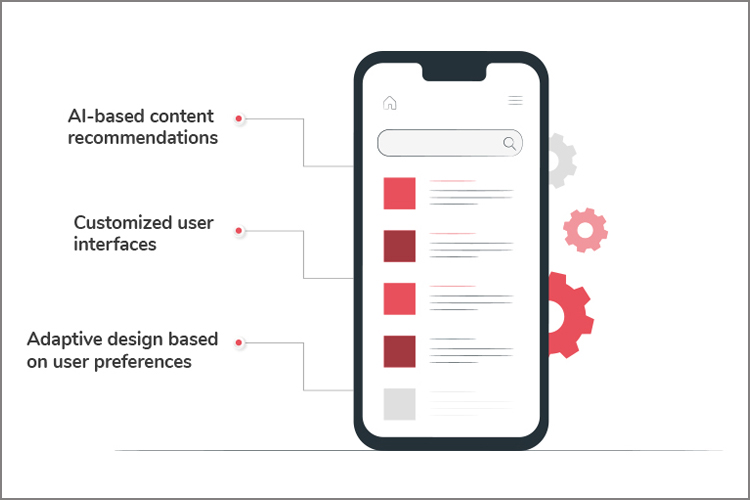
In addition to enhancing aesthetics, AI empowers designers to deliver personalized experiences that cater to individual user preferences. This level of personalization significantly improves user engagement and satisfaction. Here’s how AI enhances user experience in website design:
AI-based content recommendations:
By analyzing user behavior and preferences, AI algorithms can suggest personalized content and products, leading to higher user engagement. This technology enables designers to curate customized experiences for users, ensuring they find relevant content tailored to their interests.
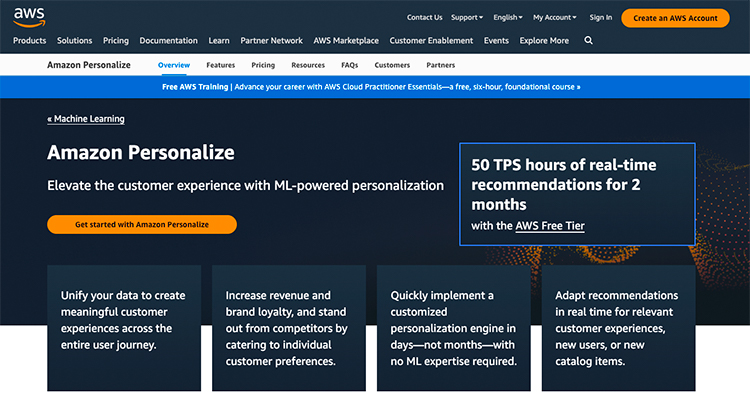
One notable tool in this area is the Amazon Personalize service. It leverages AI to deliver personalized recommendations based on user interactions and historical data, allowing designers to curate customized experiences for their users.
Customized user interfaces:
AI algorithms dynamically adjust the user interface elements based on individual preferences, creating a personalized browsing experience. Whether it’s font size, layout, or navigation options, AI-driven customization ensures that each user feels the website is designed just for them.
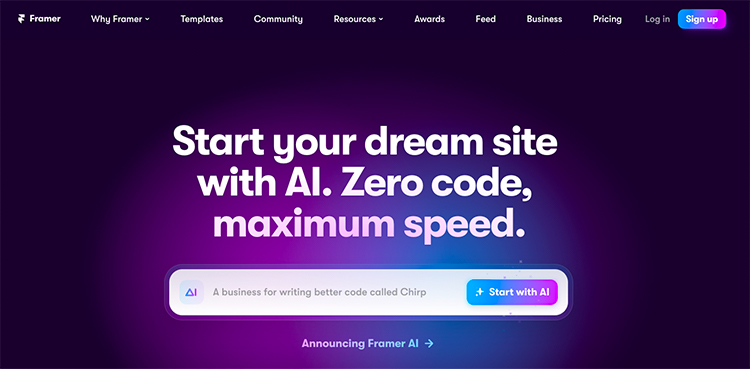
One example of a tool that offers customizable user interfaces is Framer. With AI-powered design components, Framer allows designers to create adaptive interfaces that can be personalized based on user preferences, ensuring a tailored experience for each user.
Adaptive design based on user preferences:
AI-powered websites can adapt and customize their design elements to suit each user’s preferences. For example, a website may adjust its font size, color contrast, or layout based on the user’s accessibility needs, ensuring a seamless and inclusive browsing experience.
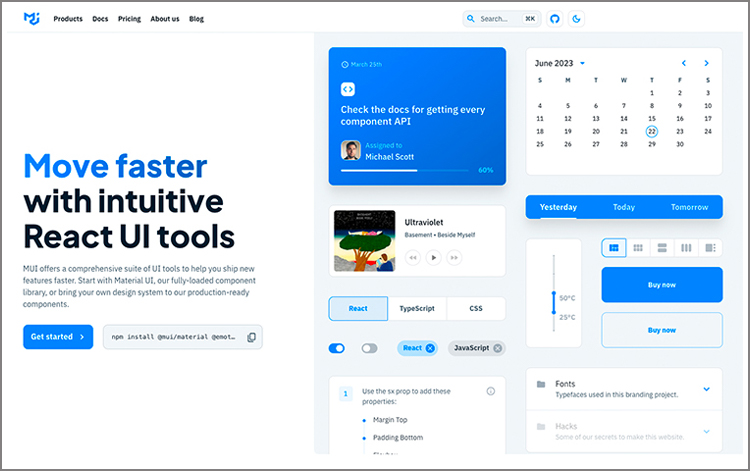
An excellent example of this is the Material-UI library. With AI-driven adaptive design components, Material-UI allows designers to create websites that automatically adjust font size, color contrast, and layout based on user preferences, ensuring a seamless and inclusive browsing experience.
Improving Functionality with AI:
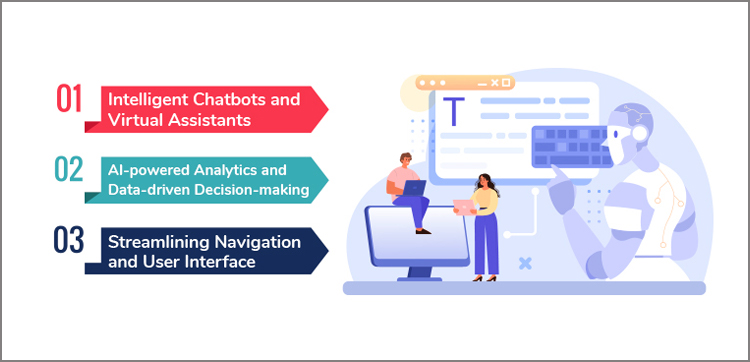
Beyond aesthetics, AI plays a crucial role in enhancing the functionality of websites, resulting in a seamless user experience and efficient website management. Let’s explore some ways AI improves functionality in website design:
Intelligent Chatbots and Virtual Assistants:
AI-powered chatbots provide instant responses to user queries, enhancing customer support and engagement. Natural language processing allows chatbots to understand and respond to user queries in a conversational manner, improving user satisfaction.
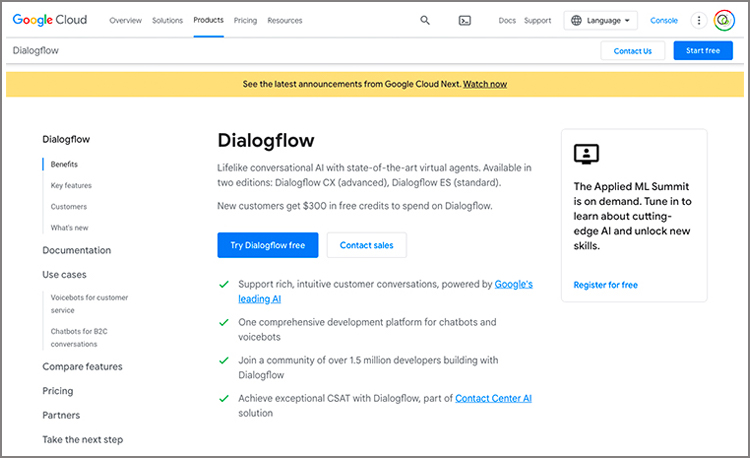
One popular AI chatbot platform is Dialogflow by Google Cloud, which utilizes natural language processing and machine learning to create conversational chatbot experiences. It allows designers to build intelligent virtual assistants that can understand user intent and provide personalized responses.
AI-powered Analytics and Data-driven Decision-making:
AI algorithms analyze vast amounts of user data to gain insights into user preferences, trends, and patterns. This enables designers to optimize website performance and increase conversion rates based on data-driven decisions. By harnessing AI analytics, designers can identify areas for improvement and make informed design choices.
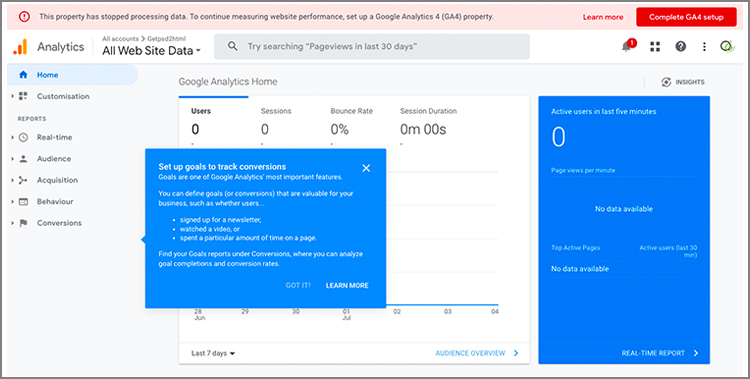
Google Analytics is a widely used AI-powered analytics platform that offers robust data tracking, visualization, and reporting capabilities. It allows designers to gather valuable insights about user behavior and make data-driven decisions to optimize website performance and user experience.
Streamlining Navigation and User Interface:
AI-driven search and filtering capabilities enhance website functionality by providing accurate and relevant results to users. Predictive and intuitive user interface elements anticipate user actions, creating an intuitive and seamless browsing experience.
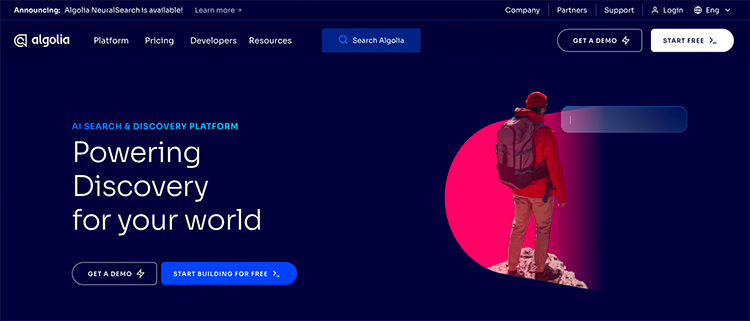
Algolia is an AI-powered search and discovery platform that enables designers to implement powerful search functionality with features like typo-tolerance, personalized search results, and autocomplete. It streamlines navigation and helps users find what they’re looking for quickly.
Overcoming Design Challenges with AI:
Designers face numerous challenges in website design, and AI offers valuable solutions to overcome them. Here are a few challenges where AI plays a significant role:
1. Responsive and Mobile-Friendly Design:
AI-based mobile optimization techniques ensure websites are responsive and visually appealing across various screen sizes. This ensures a consistent user experience regardless of the device used.
2. Cross-Browser Compatibility and Testing:
AI-driven compatibility testing and bug detection automate the testing process, ensuring websites are compatible with different browsers. This technology helps identify and resolve potential issues, ensuring a seamless experience for users.
Case Studies: Real-World Examples of AI in Website Design:
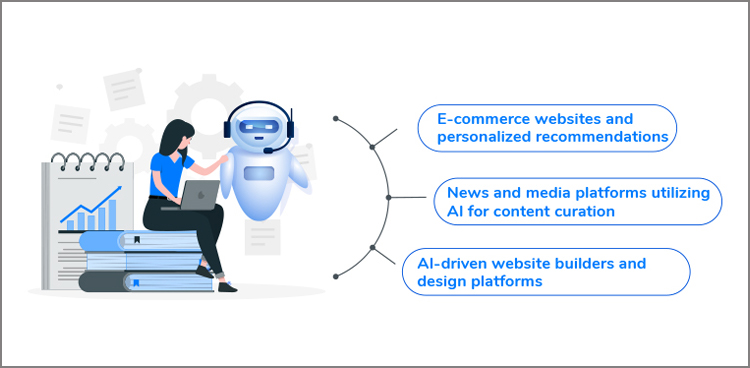
Examining real-world applications of AI in website design provides concrete examples of how it can revolutionize the digital landscape. Let’s explore some case studies:
-
E-commerce websites and personalized recommendations:
AI algorithms analyze user data to provide personalized product recommendations, enhancing the shopping experience. By leveraging AI, e-commerce websites can offer targeted recommendations, leading to increased sales and customer satisfaction.
-
News and media platforms utilizing AI for content curation:
AI-powered algorithms curate and recommend news articles based on user preferences, improving content discovery. This technology ensures that users are presented with relevant and engaging content, enhancing their overall browsing experience.
-
AI-driven website builders and design platforms:
AI-powered website builders automate the design process, enabling even non-designers to create visually appealing websites. These platforms utilize AI algorithms to generate design suggestions, making website creation more accessible and efficient.
Ethical Considerations and Future Challenges:
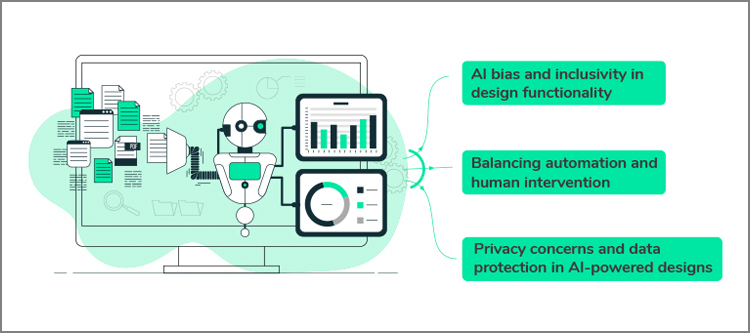
While AI offers remarkable possibilities, it is important to address ethical considerations and potential challenges in website design. Let’s explore some key areas:
-
AI bias and inclusivity in design functionality:
When incorporating AI in website design, it’s crucial for designers to address potential biases and prioritize inclusivity. AI algorithms can perpetuate biases if trained on biased data, leading to discriminatory outcomes.
To promote inclusivity, designers should ensure diverse training data, regularly evaluate algorithms for bias, establish ethical guidelines, and involve users from diverse backgrounds in testing and feedback. By being mindful of AI bias and actively working towards inclusivity, designers can create websites that are accessible, fair, and enjoyable for all users.
-
Balancing automation and human intervention:
Finding the right equilibrium between AI automation and human creativity is essential for preserving a distinctive and human-centric approach in website design. Designers should view AI as a tool to enhance their creative abilities and expertise, rather than replacing them entirely. By harnessing the power of AI alongside human ingenuity, designers can create unique and personalized website experiences that resonate with users on a deeper level.
-
Privacy concerns and data protection in AI-powered designs:
Incorporating AI technologies in website design necessitates a strong emphasis on user privacy and data protection. Designers must prioritize transparency in data collection, storage, and usage to foster trust with users.
Implementing robust security measures, obtaining explicit user consent, and adhering to data protection regulations are crucial steps to ensure that AI-powered designs respect user privacy. By prioritizing privacy and data protection, designers can create a safe and trustworthy digital environment for users to engage with.
Future Trends and Possibilities:
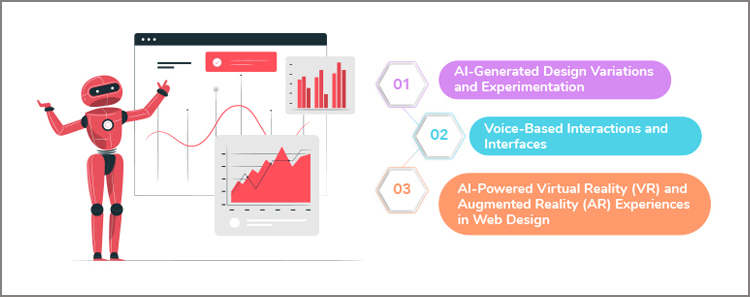
The future of AI in website design holds immense potential for further advancements and innovation. Let’s explore some exciting possibilities:
AI-Generated Design Variations and Experimentation:
AI brings the advantage of generating multiple design variations, enabling designers to experiment and explore new creative possibilities. By leveraging AI algorithms, designers can expand their design options, uncover novel approaches, and select the most effective and innovative designs for their websites.
Voice-Based Interactions and Interfaces:
The future of website design is expected to incorporate AI-powered voice assistants and interfaces. These interfaces offer more intuitive and hands-free interactions, revolutionizing the way users engage with websites. By integrating voice technology, designers can create seamless browsing experiences, allowing users to navigate and interact with websites using natural language commands.
AI-Powered Virtual Reality (VR) and Augmented Reality (AR) Experiences in Web Design:
The fusion of AI with VR and AR technologies unlocks the potential for immersive and interactive web experiences. By incorporating AI algorithms, designers can create captivating virtual environments and augmented reality overlays that enhance user engagement. This integration of AI, VR, and AR enables businesses to showcase products or services in innovative ways, providing users with compelling and memorable interactions on the web.
Conclusion:
The impact of AI on website design is profound, revolutionizing both aesthetics and functionality. AI enables designers to create visually appealing websites while enhancing user experiences through personalized content, intelligent chatbots, and data-driven decision-making.
As we embrace the potential of AI in website design, it is crucial to consider ethical implications, strike the right balance between automation and human touch, and prioritize user privacy.
With AI as a powerful ally, websites can become captivating digital experiences that seamlessly integrate aesthetics and functionality, setting new standards for the online world.


